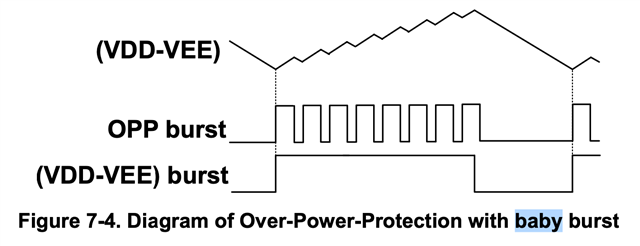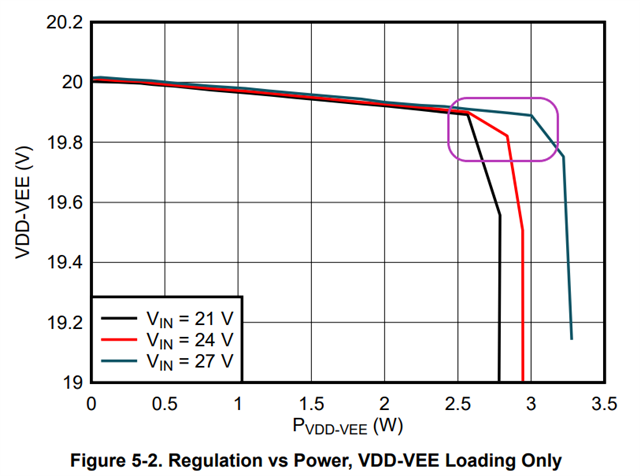I'm confused by Figure 7-4 in the UCC14240-Q1 data sheet. If the OPP function is active, then surely that means the load is trying to draw more power than the device can deliver? In which case, wouldn't the VDD-VEE voltage decrease until the power consumed by the load equals the maximum output power of the device or the output undervoltage protection kicks in?
Figure 7-4 appears to show the VDD-VEE output voltage rising until it reaches the upper threshold of the hysteretic control scheme, whereupon the control loop turns off the primary-side inverter. I don't understand how that's possible while the OPP is active.
Or have I misunderstood the OPP function? Does it simply compensate for higher input voltages and always generates the baby burst, even when the load is not trying to exceed the maximum output power? Is that what Figure 7-4 is trying to show?
Any clarification would be welcome.
Regards,
Nigel




